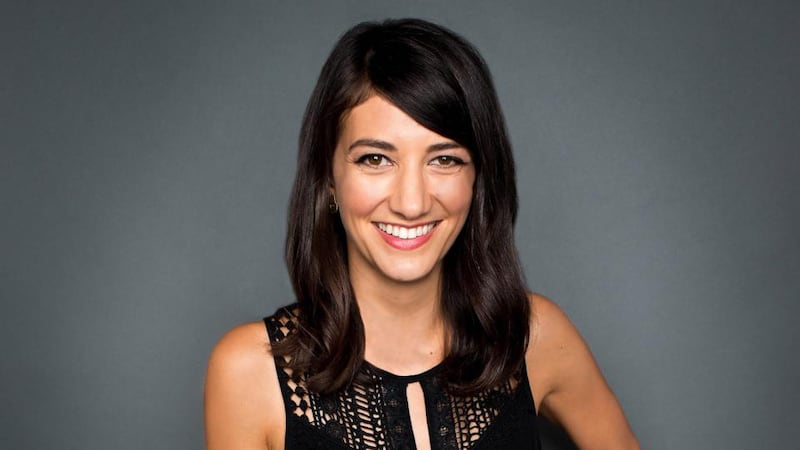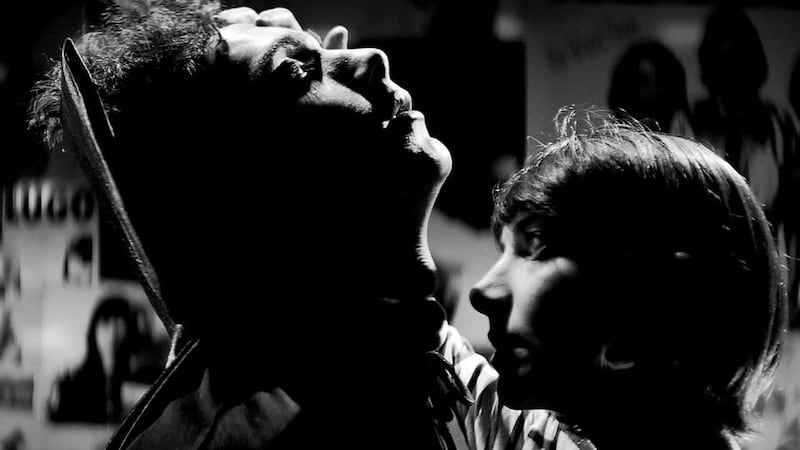Construct a picture of the United States from its media and you could be forgiven for concluding that there was scarcely a Middle Eastern person in the entire nation. Those few who did make it as actors found themselves playing terrorists and associated hoodlums. There are, of course, vast immigrant communities from that part of the world in the US. Somewhere close to two million Americans have some Iranian ancestry and a significant proportion of those live in southern California.
The excellent Sheila Vand is among their number. You will remember her significant supporting role as the housekeeper and narrator in Argo.
Next year you can see her alongside Martin Freeman and Tina Fey in the provocatively titled comedy The Taliban Shuffle. Right now, she owns the screen in Ana Lily Amirpour's stunning Iranian-American vampire film A Girl Walks Home Alone at Night.


Breaking stereotypes
“We are a newer immigrant community,” she tells me. “For the Middle Eastern community, coming into media, it is like it was for the African-Americans once. It’s about breaking stereotypes. We have to break that mould. We began playing a bunch of terrorists and started to slowly expand. I do think there’s something interesting happening. People are getting that it’s a multi-faceted community.”
A Girls Walks Home – despite touching on the era's unavoidable eternal creature – is certainly not dealing in stereotypes. It is an utterly singular film. Set in a version of Iran that incorporates shades of the old west, the picture follows Vand's mysterious lonesome woman – clad in a black chador – as she floats dangerously about the streets.
Like many of the more interesting recent vampire films, A Girl Walks Home inspires endless potential allegorical interpretations. Many have suggested that something is being said about misogynist attitudes in both the US and Iran. Was that part of their conversations?
Melding of cultures
“It wasn’t really part of the discussion,” she says. “But for Lily and I there is just nothing strange about a girl who is strong and a bad ass. Of course that’s in there. You get that whenever you have a strong character who doesn’t get that strength from mimicking a man.”
Fair point. We've seen such characters before. What we have never seen before is this sort of melding of cultures. When word got out about A Girl Walks Home at the Sundance Film Festival, many reports suggested that the movie was actually shot in Iran. In fact, it is all filmed in southern California and plays very creatively with that confusion. Where the heck is this mythically muddled 'Bad City'?
“Bad City is a completely fictional place,” she says. “I never had the opportunity to go to Iran but the culture is such a large part of my life it felt like a mythological place to me. This is maybe the part of Iran that lives as mythology. A lot of people in the diaspora are in that position.”
Sheila is in an ideal position to represent that community. Her parents – dad is a computer programmer and mom is an accountant – left shortly after the Iranian revolution and Sheila is the first of her siblings to be born in the US. It shouldn’t surprise us that she gets to grips with Farsi in the film.
“Oh, Farsi is my first language,” she says in a pure So-Cal accent. “I was speaking it growing up. I was born in California but English is my second language. Actually, when acting in Spanish and English, there is a bit of a disconnect for me. It also added a fun dynamic because all the crew spoke English. There was this strange switch whenever she yelled ‘cut’.”
Fresh prejudices
Raised in Palo Alto, a graduate of UCLA, Vand has lived her adult life in post-9/11 America. The standard story is that life changed for Americans of Middle Eastern descent on that day. New suspicions are said to have arisen. Fresh prejudices were minted. Does any of that ring bells with her?
“Yeah. I was pretty young when 9/11 happened,” she says. “I grew up in a very progressive community. I didn’t have many problems. But there was a shift in people’s perceptions. I would say I was from Iran and I am not sure what that meant to people. But every minority has gone through this. And this film is part of the process of changing that. To make an American film set in Iran is already a complex powerful thing.”
That's true. And how interesting it is that the vampire has offered a route into that part of the world. An eastern European myth, revived in the 18th and 19th centuries by gothic writers, now offers one of the most fecund narrative templates of the age. It seems as if any issue can be investigated through the agency of the bloodsucker. Let the Right One In? Only Lovers Left Alive? There are endless ways of exploiting those stories.
"Anything you do can become part of the lore. I was researching this and I realised that's what happened with Let the Right One In, for example. You never actually see her preying. You can make up your own rules."
You can, for instance, tell a feminist story? “Hey, this movie is all about girl power.”
That’s about the only thing it has in common with the Spice Girls.
“Ha ha. It is very different to the Spice Girls movie.”
A good double bill?
“Oh yeah.”











